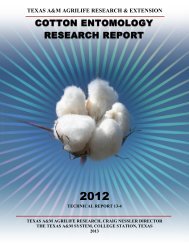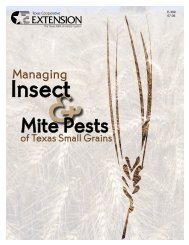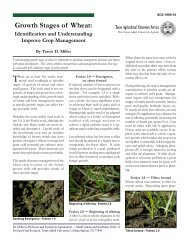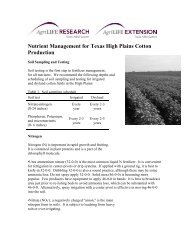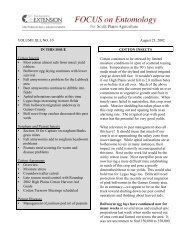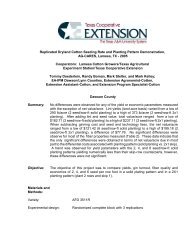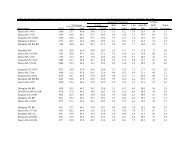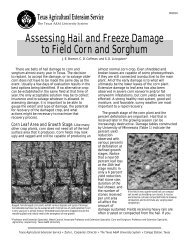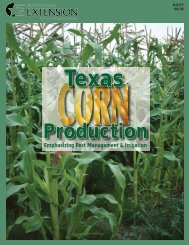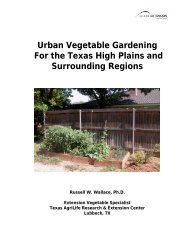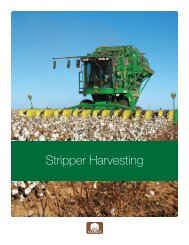Systems Agronomic and Economic Evaluation of Cotton Varieties in ...
Systems Agronomic and Economic Evaluation of Cotton Varieties in ...
Systems Agronomic and Economic Evaluation of Cotton Varieties in ...
Create successful ePaper yourself
Turn your PDF publications into a flip-book with our unique Google optimized e-Paper software.
EVALUATING FIELD TRIAL DATAThis article has been repr<strong>in</strong>ted with permission fromSouthwest Farm Press Vol 25, Number 11, April 9, 1998.Field trials can provide helpful <strong>in</strong>formation to producers as they compare products <strong>and</strong>practices for their operations. However, field trials must be evaluated carefully to makesure results are scientifically sound, not mislead<strong>in</strong>g <strong>and</strong> <strong>in</strong>dicate realistic expectations foron-farm performance.This fact sheet is designed to give you the tools to help you determ<strong>in</strong>e whether data froma field trial is science fact or science fiction.What are the best sources <strong>of</strong> field trial data?Field trials are conducted by a broad range <strong>of</strong> <strong>in</strong>dividuals <strong>and</strong> <strong>in</strong>stitutions, <strong>in</strong>clud<strong>in</strong>guniversities, ag <strong>in</strong>put suppliers, chemical <strong>and</strong> seed companies <strong>and</strong> growers themselves.All are potentially good sources <strong>of</strong> <strong>in</strong>formation.What are the common types <strong>of</strong> field trials?Most field trials fall <strong>in</strong>to one <strong>of</strong> two categories: side-by-side trials (<strong>of</strong>ten referred to as striptrials) or small-plot replicated trials. Side-by-side trials are the most common form <strong>of</strong>on-farm tests. As the name suggests, these trials <strong>in</strong>volve test<strong>in</strong>g practices or productsaga<strong>in</strong>st one another <strong>in</strong> plots arrayed across a field, <strong>of</strong>ten <strong>in</strong> strips the width <strong>of</strong> theharvest<strong>in</strong>g equipment.These strips should be replicated across the field or repeated at several locations to<strong>in</strong>crease reliability. Small-plot replicated trials <strong>of</strong>ten are conducted by universities <strong>and</strong>companies at central locations because <strong>of</strong> the complexity <strong>of</strong> manag<strong>in</strong>g them <strong>and</strong> thespecial plant<strong>in</strong>g <strong>and</strong> harvest<strong>in</strong>g equipment <strong>of</strong>ten required.Replicated treatments <strong>in</strong>crease the reliability <strong>of</strong> an experiment. They compare practices orproducts aga<strong>in</strong>st one another multiple times under uniform grow<strong>in</strong>g conditions <strong>in</strong> severalr<strong>and</strong>omized small plots <strong>in</strong> the same field or location.Small-plot replicated trials also may be conducted on farmers’ fields where specialconditions exist, for example, a weed <strong>in</strong>festation that does not occur on an experimentstation.158




